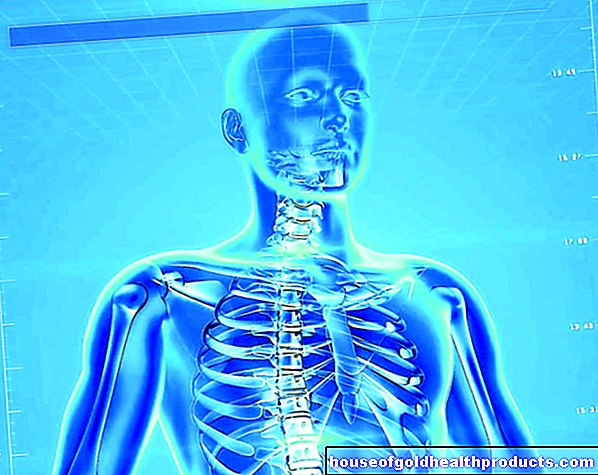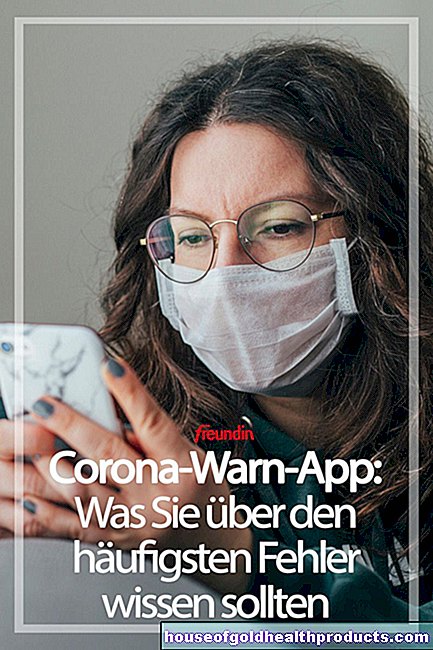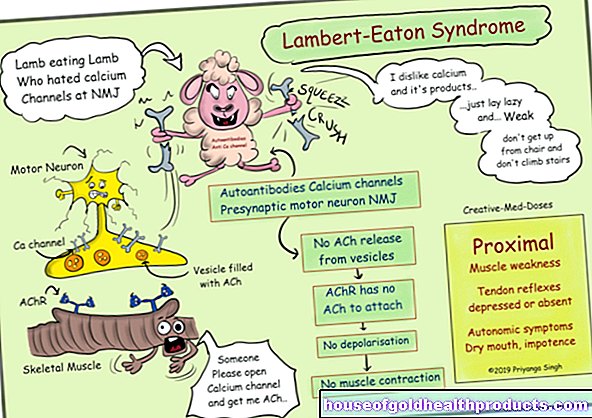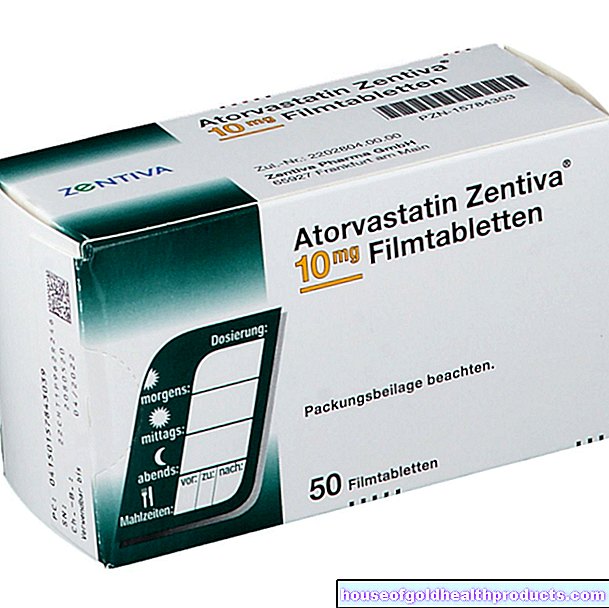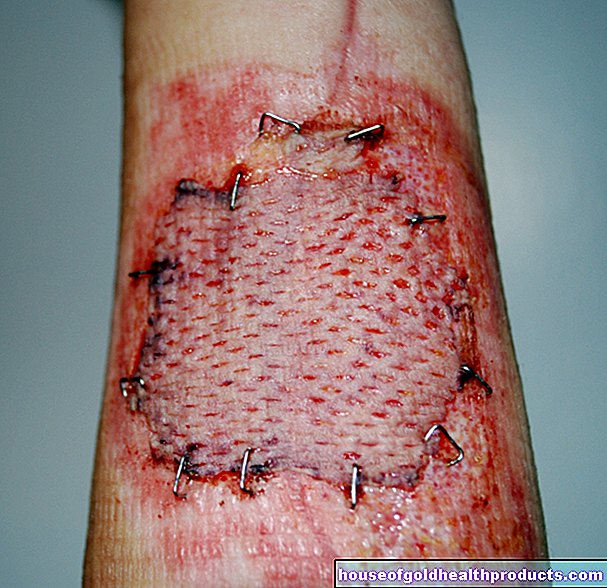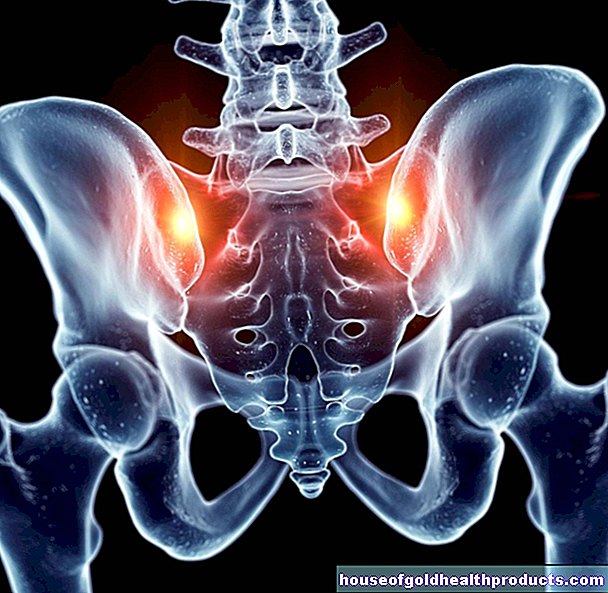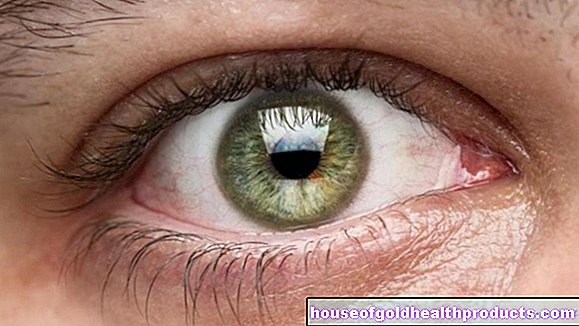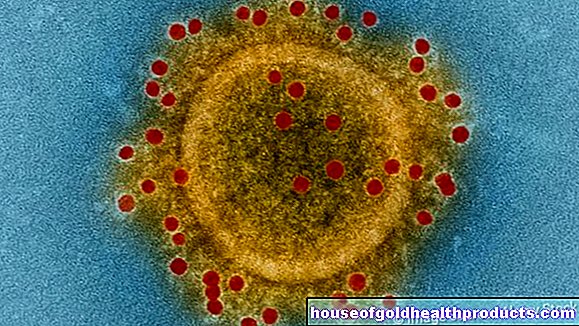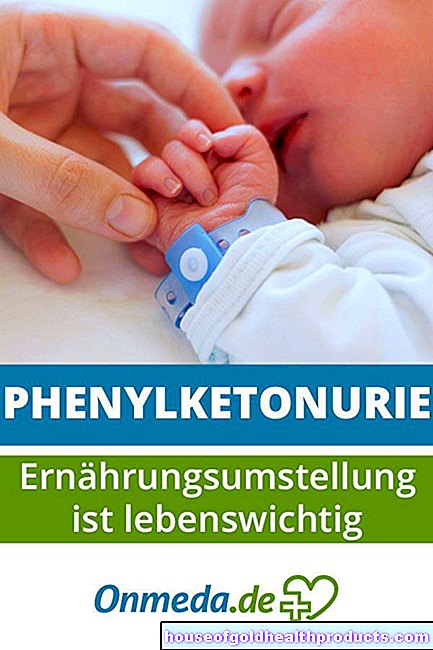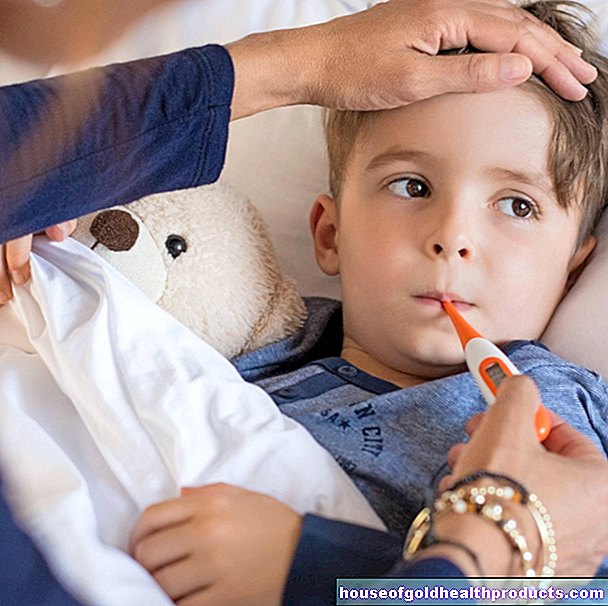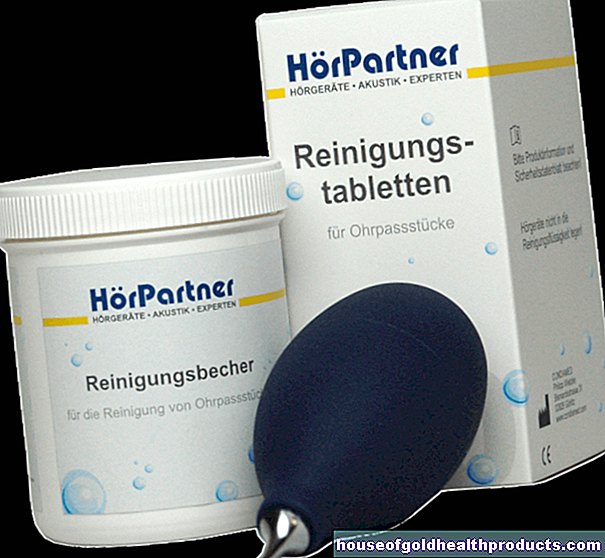Sudden infant death
Florian Tiefenböck studied human medicine at the LMU Munich. In March 2014, he joined as a student and has supported the editorial team with medical articles ever since. After receiving his medical license and practical work in internal medicine at the University Hospital Augsburg, he has been a permanent member of the team since December 2019 and, among other things, ensures the medical quality of the tools.
More posts by Florian Tiefenböck All content is checked by medical journalists.The term sudden infant death syndrome means that a child dies without warning and without any identifiable cause. Doctors and scientists diagnose SIDS when, even after thorough examination, they cannot identify any other cause of death. Sudden infant death syndrome is a catastrophe for the parents concerned. Here you can find out more about sudden infant death syndrome and what you can do to protect your child from SIDS.
ICD codes for this disease: ICD codes are internationally recognized codes for medical diagnoses. They can be found, for example, in doctor's letters or on certificates of incapacity for work. R95

Sudden Infant Death Syndrome: Description
Sudden Infant Death Syndrome (SIDS) means that a child dies suddenly and unexpectedly. In the case of this tragic death of a seemingly healthy infant or toddler, doctors also speak of the "Sudden Infant Death Syndrome", or SIDS for short. In this country, sudden infant death syndrome is also known as “crib death” or “sudden infant death”. The causes cannot be determined with certainty.
Even a careful autopsy (internal post-mortem examination) does not usually provide any uniform causes for sudden infant death syndrome. Signs or warning signs can be found just as little as triggering circumstances. A fact that can be very worrying for parents. Scientists have conducted numerous studies. To date, the results only provide possible risk factors for SIDS.
Sudden Infant Death Syndrome: Frequency and Age
Sudden infant death syndrome has become less common. In 2012, according to the Federal Statistical Office in Germany, 131 children died within the first year of life of cot death. In 2011 there were 147, at the turn of the millennium 482 and in 1990 even 1283 SIDS deaths. This decrease in infant deaths is explained by better prevention.
About two-thirds of the cases occur in winter. This increase can be explained by the fact that many SIDS children have previously suffered from a cold, which occurs more frequently in these months. Most infants die in their sleep early in the morning. The majority are found lying prone by their parents. SIDS children are often bathed in sweat and lie with their heads under the covers. When babies sleep on their stomachs, the risk of SIDS is significantly increased.
Sudden infant death affects more boys: In 60 percent of cases, male babies are affected by SIDS. It is not possible to precisely determine the age up to which the risk of sudden infant death syndrome exists. About 80 percent of deaths occur before the age of six months. The children are rarely over a year old.
Sudden infant death syndrome: causes and risk factors
Since no clear causes for sudden infant death syndrome have been found to date, experts assume that several factors interact. On the one hand, these relate to the course of pregnancy, as well as the physical condition and health of the child (endogenous risk factors). On the other hand, environmental factors, i.e. external influences, play a decisive role in sudden infant death syndrome (exogenous risk factors).
Disorders of the life support functions
Everyone has natural management and control systems. These keep the breathing going, for example. They also “measure” the gas content in the blood and react accordingly. An example: everyone breathes in vital oxygen (O2) and exhales carbon dioxide (CO2). If a blanket lay on your face while you sleep, the emitted CO2 would accumulate there. It would be inhaled again and the CO2 level in the blood would rise. However, an area in the brain stem would immediately recognize the increased value, which is unfavorable for the body. Breathing would be stimulated or the person concerned would wake up. In this way, the body can avoid an undersupply and protect itself from suffocation.
Even an infant already has these life-sustaining reflexes, but they have to mature first. In the case of sudden infant death syndrome, experts assume a failure in the control or steering function. An O2 value or an increased CO2 value during sleep can no longer be compensated for, or a falling blood pressure is no longer absorbed.
Risk factor genes
Researchers have found that twins and siblings of SIDS children are six times more likely to die from cot death as well. They therefore suspect that changes in the genome play a role. Its genes carry the information with which the body produces, for example, messenger substances (neurotransmitters) and their recipient structures (receptors). The body controls many of its functions in this way. Altered genes can lead to an error in this process. This can also affect the control of the vital functions; possible consequence is sudden infant death syndrome. The SIDS comes with no warning signs.
Problem-birth risk factor
Various studies investigate the connection between childbirth and sudden infant death syndrome. Premature babies therefore have an increased risk of SIDS. This also applies to children from multiple births. Newborns who have breathing problems during or after birth are also at risk of sudden infant death syndrome. A congenital narrowing of the airways can cause SIDS. Another factor is a weakness in the muscles of the throat. The upper respiratory tract is narrowed and sudden infant death occurs.
Age as a risk factor
During the maturation process of the important body functions, newborns are particularly sensitive. Unfavorable external influences influence the biological systems and can lead to sudden infant death. However, it is precisely these external factors that can often be influenced very well by the parents.
Risk factors prone position and overheating
Parents are asked after sudden infant death how they found their child. Evaluations of this information show how crucial the infant's sleep situation is. The prone position is considered to be the greatest risk factor for sudden infant death. The risk of SIDS is even higher if the bed mat is very soft or if there are additional pillows, soft toys, towels and blankets in the bed. These conditions can lead to impaired breathing. The child breathes in too much carbon dioxide again, while the air they breathe contains less and less oxygen. The child can neither compensate for this by increasing breathing, nor can it free itself with targeted movements. There is a risk of sudden infant death.
At the same time, the warmth builds up in the baby's body. It is believed that this overheating also impairs physical functions. If the cardiovascular regulation then fails, this can also lead to sudden infant death syndrome.
Risk factor infections
Cold infections mean an additional risk of sudden infant death syndrome. Its consequences are manifold. The immature immune system does not have a sufficient response to the pathogens. If breathing is difficult - for example in the prone position - bacteria, for example, can multiply even more easily. The infant's body reacts to toxins with a fever, which in turn puts a strain on the circulatory system and leads to increased fluid loss. Everything together can impair the child's central regulatory mechanisms and thus even lead to sudden infant death syndrome.
Risk factor stress and social status
More and more people feel stressed out. They subconsciously transfer part of it to their children. For infants and toddlers in particular, parental stress increases the risk of sudden infant death syndrome, according to studies. A young mother's age (under 20 years) and pregnancies in close succession are also believed to increase the risk of SIDS. In addition, a poor financial and social status of the family is said to favor sudden child death.
Risk factors smoking, drugs, alcohol
Studies show that if mothers smoke or take drugs during pregnancy, this not only leads to developmental disorders or malformations of the embryo or fetus in many cases. It also increases the infant's risk of sudden cot death. Babies are particularly at risk if they smoke in and around their home. Nicotine disrupts the control of vital functions in the child's body.
Sudden Infant Death Syndrome: Investigations and Diagnosis
If a young child has died of sudden infant death syndrome, the parents concerned are asked first. In this way, the doctor wants to find out as many details as possible about the previous history, i.e. from the beginning of pregnancy to sudden infant death syndrome. The situation in which the parents found their child is also particularly important. One speaks of the assessment of the so-called "death scene". In this way, possible risk factors should be identified or excluded.
The infant who died of sudden infant death syndrome is then autopsied. This means that forensic doctors or pathologists examine the child's body. If the parents agree, a pathologist carries out the autopsy. If not, the investigating public prosecutor will decide how to proceed. An autopsy ordered by him is then carried out by a forensic doctor. They should clarify whether internal causes or external negligence could have brought about the suspected sudden infant death syndrome.
The diagnosis of "Sudden Infant Death Syndrome" or "SIDS" is therefore a diagnosis of exclusion. Doctors cannot clarify the causes of sudden infant death in this way.
Sudden Infant Death Syndrome: Prevention
Unfortunately, sudden infant death syndrome cannot be prevented. However, there are some measures that can reduce the risk of SIDS. According to current teaching, the "3 R" is a memory aid: supine position for sleeping, correct bed, smoke-free environment. They cover the most important points of the current medical guidelines for "Sudden Infant Death Syndrome":
Lay your child on their back to sleep
The most effective measure against Sudden Infant Death Syndrome is not to lay the baby on his stomach to sleep. Lay it on its back. Your child can breathe easily in this position.
The less bedding, the better
You should also not put any additional towels, pillows, cuddly toys or animal skins in bed with you. This can quickly make your child too warm. In addition, it may no longer be able to breathe freely. Make sure you have a firm mattress to sleep on. This prevents your child from sinking in too much. Also, avoid down comforters and pillows.
Use a sleeping bag
Ideally, put your child in a sleeping bag to sleep. This should be an age-appropriate size. It ensures a constant temperature. Above all, it prevents turning into the prone position, which favors sudden infant death. Even so, your child can move their arms freely. If you don't have a sleeping bag, cover the child with a flat blanket and tuck it in securely. This prevents the child from curling up in the bedding so easily and slipping their head under the covers.
Avoid too much heat
A room temperature of around 18 degrees Celsius is completely sufficient for your child. It also lowers the risk of sudden infant death syndrome. In addition to little bedding, your child should also sleep in a cot. Don't be afraid your child may be too cold. The well-known baby fat is a special heat store that acts like a flow heater for babies.
Leave your baby in his bed, but not alone
This point has been discussed in the past as a SIDS risk factor. Some scientists believe that sleeping in the parents' bed with the young child reduces the risk of sudden infant death syndrome. One study, however, says that newborns who are co-sleeping are said to be even more affected by sudden infant death syndrome.
You should therefore put your child in a separate bed of their own and place it next to your parents' bed. In this way, you can act in good time in an emergency and prevent sudden infant death syndrome.
Take the check-up appointments
Regular check-ups are important in order to identify possible diseases or developmental disorders in babies at an early stage. Your pediatrician can also provide useful advice on how to prevent sudden infant death syndrome. Signs of known symptoms should be taken seriously. Even then, do not hesitate to visit the pediatrician. Because infections increase the risk of SIDS. So you can prevent sudden infant death syndrome if, for example, you get the right treatment for a cold.
Have your child vaccinated there too. Some parents are very critical of early vaccinations. The concern that sudden infant death syndrome could be favored by the recommended vaccinations is also expressed again and again. However, there is no scientific evidence for such a connection. On the contrary, good vaccination protection also means improved protection against sudden infant death syndrome.
Breastfeeding and pacifiers could protect
Even if you don't exactly know the reason, several studies have shown that pacifiers reduce the risk of sudden infant death syndrome by up to 30 percent on average. The benefit is explained by the fact that sucking on the pacifier trains and widens the upper airways. It also makes babies sleep less deeply. However, you shouldn't force the pacifier on your baby.
The medical guidelines on sudden infant death syndrome also recommend that you breastfeed your infant for the first year of life. As long as you can. It used to be assumed that a pacifier reduced breastfeeding success. According to studies, one now thinks: Both measures together reduce the risk of sudden infant death syndrome.
Smoke-free environment!
Smoking increases the risk of sudden infant death syndrome. So do not smoke during or after pregnancy. This also applies to the father, relatives and friends who are in the vicinity of the baby or the pregnant woman. Only in a smoke-free environment can you effectively protect your child and reduce the likelihood of sudden infant death syndrome.
Learn resuscitation measures
The so-called death attack (ALTE, "apparent life threatening event") is considered a preliminary stage of sudden infant death. In the past, this emergency situation was also called near-SIDS. The child no longer breathes or moves (respiratory arrest, muscle hypotonia). The heart beats too slowly (bradycardia) and the baby turns bluish (cyanosis). If the lifeless infant is discovered early enough, resuscitation measures can protect the child from sudden infant death syndrome. Parents can learn these resuscitation measures in special courses. After such an incident, however, the risk of SIDS is significantly increased.
Monitor children at risk
The risk of sudden infant death syndrome is also increased in children with known breathing disorders. Some doctors therefore recommend monitoring the affected child with a home monitor. The monitor monitors vital functions of the newborn, such as breathing and heart rate. However, parents should be well trained in handling the devices and informed about their informative value. Because false alarms disturb the child and unnecessarily worry the parents. Without expert assistance, experts advise against this form of surveillance. In addition, it has not been established to what extent the child is protected from sudden infant death syndrome by the more intensive monitoring.
Even if parents have already lost a child to sudden infant death syndrome, the risk of having a subsequent sibling is increased. Monitoring with a monitor is not recommended, however. Doctors are much more likely to recommend regular medical check-ups. If the parents avoid risk factors, they protect their infant even better against sudden infant death syndrome.
Sudden Infant Death Syndrome: Advice and Help
Sudden infant death syndrome is a serious trauma for parents and siblings. Many parents blame themselves and blame themselves. In addition, detectives are investigating to rule out child homicide. It is not uncommon for those affected to withdraw.
Relatives and friends can help in the grieving process. In addition, there are parent self-help groups in many countries (GEPS-Germany, SIDS International, SIDS Austria). The pain caused by infant death, which can sometimes last for a long time, can be dealt with better with other sufferers. It is best if both parents go to these meetings together. This promotes and strengthens the relationship. Studies show that partnership crises occur most frequently six months after sudden infant death syndrome.
Why the autopsy can help
Even if many parents find it difficult to get used to the idea of opening a corpse, this is the only way for the pathologist to diagnose sudden infant death, for which other causes must be ruled out. The knowledge from the autopsy can help to cope with grief.
Tags: menopause skin care laboratory values